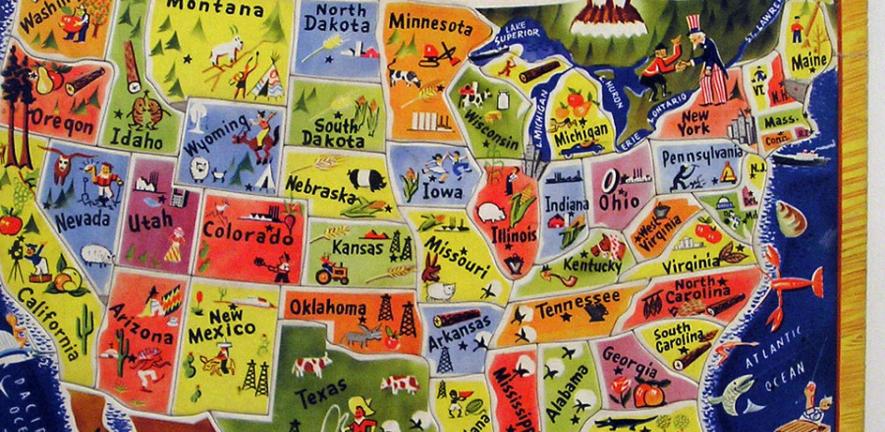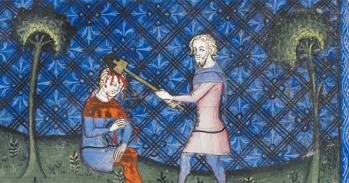
The personalities of people in the USA often differ according to the state in which they live, a new study led by Cambridge University has revealed.
The personalities of people in the USA often differ according to the state in which they live, a new study led by Cambridge University has revealed.
Obviously it's not as simple as saying that a person is guaranteed to be more anxious if they come from West Virginia or more religious because they happen to live in New Mexico; but we did find pretty clear signs that there are meaningful differences in the personalities of people living in different areas of the United States.
Dr Jason Rentfrow
Researchers used the results from more than half a million online surveys to create a "personality map" of the United States, showing that different types of people are more likely to live and flourish in different parts of the country.
For example, according to the findings, North Dakotans are often more sociable and affable than most Americans, while people living in New York State tend to be more highly-strung and creative.
The research team found "striking" wider geographical trends, such as a national "stress belt" dividing the more anxious and impulsive eastern USA from the comparatively relaxed west. They also identified strong links between personality traits and certain social phenomena, such as crime and life expectancy rates.
The study is the first analysis of its kind and was led by Dr Jason Rentfrow, a lecturer in social and political sciences at the University of Cambridge (UK). Dr Rentfrow is originally from Louisiana, a state where his own research would suggest the people are often friendly, but stress levels are high.
"Although these are preliminary findings and require more evaluation, they did throw up some striking geographical trends," Dr Rentfrow said.
"Obviously it's not as simple as saying that a person is guaranteed to be more anxious if they come from West Virginia or more religious because they happen to live in New Mexico; but we did find pretty clear signs that there are meaningful differences in the personalities of people living in different areas of the United States.
"What is particularly impressive is that the results show the effects of personality on people's social habits, values and lifestyles are so pronounced that they have an impact on much bigger social forces."
The authors of the new study argue that the strongest personality traits within a given population become self-reinforcing by influencing the region's life and culture.
For example, where the population is creative, imaginative and intellectual (as was found to be the case in states including New York and California), one might expect to find people who are interested in art, literature and science. This may in turn lead to the establishment of institutions such as universities and museums. These institutions then influence the views and values of the local populace, encourage more creative and imaginative people to move to the region, and give people who do not fit that profile less reason to live there.
To test this theory, the research team set out to identify whether prevalent personality types were indeed reflected in the social and cultural life of each US state.
Using an established framework called the "Five Factor Model" they divided personality types into five broad categories: "Extraversion" (sociable, energetic, enthusiastic people); "Agreeableness" (warm, friendly, compassionate); "Conscientiousness" (dutiful, responsible, self-disciplined); "Neuroticism" (anxious, stressful, impulsive); and "Openness" (curious, intellectual, creative).
Over six years, 619,397 people from across the US took part in an online test in which they were asked to read 44 short statements, such as "I see myself as someone who is outgoing" and "I see myself as someone who is very religious". The respondents had to mark their level of agreement with each statement on a scale of one to five.
The results of the survey allowed researchers to compute estimates of each of the personality dimensions for every state and identify which personality traits were strongest in which states.
Arizona, for example, ranked high on conscientiousness but low on neuroticism, suggesting that people there like order and discipline, but are fairly relaxed. Wisconsin had high readings for extraversion and agreeableness, but low for openness, suggesting that people there are sociable and friendly and traditional.
The study also revealed clear patterns which showed that personalities are not randomly distributed, but geographically clustered. "Neuroticism" was, for instance, highest in the east along a line stretching from Maine to Louisiana, and lowest in the west, suggesting that the country has an identifiable "stress belt".
To determine whether the personality differences between states were meaningful, the researchers then tested the impact of the personality traits on national indicators of crime, social involvement, religiosity, employment, health, values, disease and mortality.
Basing their judgements on previous research, they made predictions as to how personality traits might affect socio-cultural trends. They also modified the results to take account of external factors that might influence the statistical trends, such as urbanisation, educational attainment and median income.
Even with these checks and balances, 75% of the predicted correlations turned out to be right. For example, in states with a high level of extraversion, large proportions of the population were found to be employed in industries where social interaction is important, such as sales. States with a high level of agreeableness had lower crime rates. This seems to confirm the theory that regional personality is "self-reinforcing".
"The results provide a rich understanding of the psychological characteristics of each state," Dr Rentfrow added. "Hopefully our model will stimulate further research and broaden our understanding of human behaviour."
The report, "The Geography Of Personality; A Theory of the Emergence, Persistence and Expression of Geographic Variation in Basic Traits", is published in the new issue of Perspectives On Psychological Science.
This work is licensed under a Creative Commons Licence. If you use this content on your site please link back to this page.





